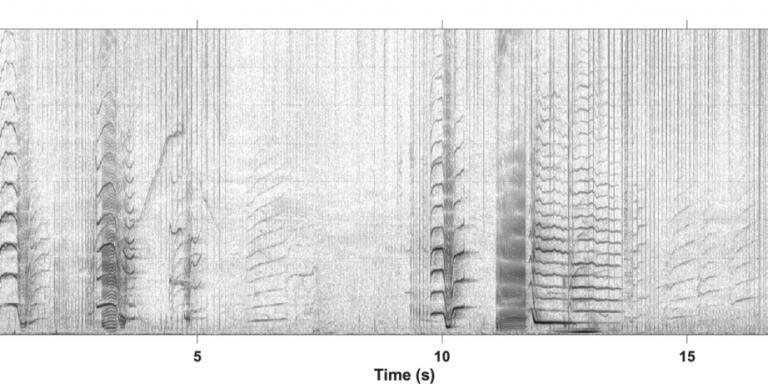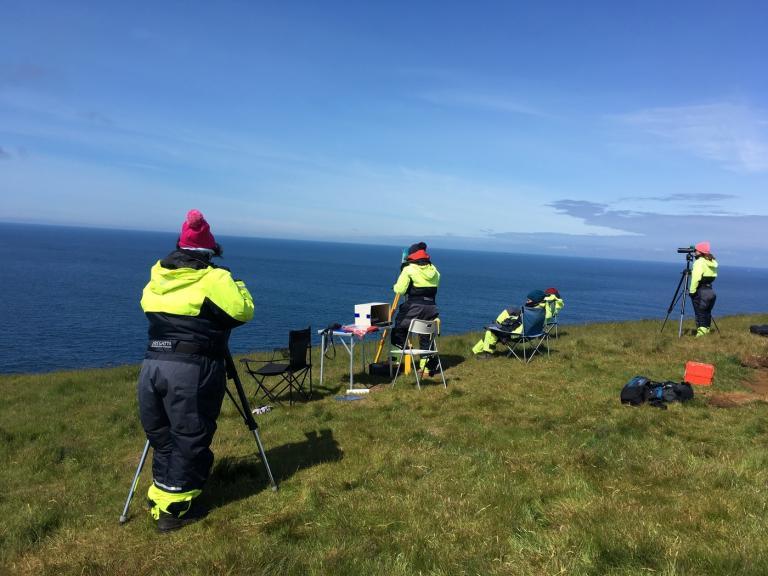
Killer whales have sometimes been called the wolves of the sea, since they hunt in organised pods and are top predators in their marine habitat. Their fearsome name suggests that there isn't much that could unsettle them. So why do they sometimes seem to flee from the mobbing and harassment of pilot whales here in Iceland, as scientists have observed? This is the question that Anna Selbmann is trying to answer with her doctoral research at the University of Iceland Faculty of Life and Environmental Sciences.
This is the first detailed study into interactions between pilot whales and killer whales in Icelandic waters, since pilot whales only recently became regular visitors to the Westman Islands, which is where Anna is conducting her research. "My PhD project tests the hypothesis that acoustic cues are particularly important in the interactions of long-finned pilot whales and killer whales," says Anna, who intends to explore whether the killer whales' calls change in proximity to pilot whales and whether there are geographical differences in killer whale call repertoire around Iceland.
Killer whales in Iceland use different calls to killer whales in Norway
Anna is not new to this kind of research, since for her Master's degree in biology at the University of Iceland she looked at killer whale calls around Iceland and compared them to the calls of killer whales in other parts of the North Atlantic. This research produced a detailed catalogue of killer whale call types in Iceland. "We found that killer whales in Iceland share some call types with killer whales in Shetland but not with killer whales from Norway," she says, adding that the project really got her interested in the communication system of killer whales. "The complexity of this communication system shows that acoustic communication is very important to these animals," says Anna who has also published a scientific article on the subejct with her collaborators.
The image shows a typical recording of the sounds of killer whales that proved different in Iceland than in Norway.
It was during this research that she first observed interactions between pilot whales and killer whales in Iceland, which she says are at once stunning and perplexing. "It seems inconceivable that killer whales, the top predators of the ocean, are avoiding other whales and even flee at high speed. It raises many questions: Why are the pilot whales harassing the killer whales? Is it competition for food or mobbing behaviour? What triggers the interaction and what is the impact on killer whales?" asks Anna. She also adds that acoustic communication is very important for both species, so it makes sense to wonder what role it plays in such interactions and whether it could explain the behaviour of the killer whales.
Anna is conducting her study under the supervision of Filipa Samarra, who recently started work as a research specialist at the UI Institute of Research Centres in the Westman Islands, Jörundur Svavarsson, professor at the University of Iceland, and Paul Wensveen, a postdoctoral researcher at the University. She is also collaborating with scientists from CEREMA in Strasbourg and the University of St Andrews in Scotland. "We also work with citizen scientists from Earthwatch, who join our fieldwork and help us collect data," says Anna, who received a doctoral grant from the Icelandic Research Fund for the project.


